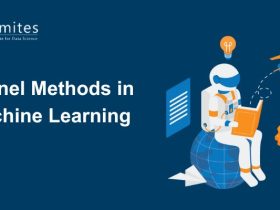Hariprasad Sivaraman, USA
The rise of Artificial Intelligence (AI) has ushered in a new era of capabilities, both for defenders and attackers in the cyber domain. While AI promises unprecedented improvements in security, efficiency, and innovation, it has also become a powerful tool in the hands of Advanced Persistent Threats (APTs). These sophisticated, stealthy cybercriminals and state-sponsored actors have already begun to leverage AI to outsmart traditional defense mechanisms and orchestrate increasingly complex and long-term cyberattacks. As AI technologies advance, the U.S. must prepare its defense systems to respond effectively to these evolving threats. But how can we stay ahead in this fast-paced technological arms race?
What Are Advanced Persistent Threats (APTs)?
APTs are among the most dangerous and insidious threats to national security and critical infrastructure. Unlike typical cyberattacks, which are opportunistic and short-lived, APTs are characterized by:
- Long-Term Infiltration: APTs are designed to gain persistent access to a network or system over an extended period, often months or even years.
- Stealth and Evasion: These threats are highly skilled at avoiding detection, using techniques like zero-day exploits, social engineering, and rootkits to stay hidden within the system.
- Intelligence Gathering and Sabotage: The ultimate goal of an APT is often espionage—stealing sensitive information, intellectual property, or state secrets. In some cases, the attackers aim to disrupt or sabotage critical operations.
Given the stakes—ranging from political espionage to the theft of classified military data—defending against APTs requires a multi-layered, proactive approach that goes beyond conventional cybersecurity methods.
The Role of AI in Empowering APTs
AI and machine learning (ML) have transformed cybersecurity, enabling both defenders and attackers to gain advantages in this digital battleground. For APT groups, AI provides several powerful tools to overcome traditional defense mechanisms:
- Automated Exploitation: APTs can use AI to automate the identification of vulnerabilities in U.S. systems. By using machine learning to analyze vast amounts of data, they can uncover weak points faster than human hackers ever could.
- Sophisticated Phishing Attacks: AI can help attackers craft hyper-targeted phishing emails, using natural language processing (NLP) to mimic the tone, style, and intent of trusted sources with uncanny precision.
- Deepfakes and Social Engineering: AI-powered deepfake technology can be used to impersonate individuals or organizations, further enhancing the effectiveness of social engineering tactics. This could include creating fake audio or video recordings to deceive officials or executives into revealing sensitive information.
- Evasion of Detection Systems: AI allows APTs to quickly adapt and evade traditional intrusion detection and prevention systems (IDS/IPS). By constantly learning from responses to previous activities, AI-based attacks can change their tactics and make detection increasingly difficult.
- Optimized Data Exfiltration: Through AI-driven algorithms, APTs can optimize the speed and stealth of data exfiltration, making it harder to notice large-scale breaches.
As APTs harness these AI-driven capabilities, the need for robust defenses against them becomes even more pressing.
Preparing U.S. Systems for AI-Enhanced APTs
To address the evolving threat landscape, the U.S. must embrace an integrated approach to cybersecurity that incorporates AI-powered tools, proactive threat hunting, and continuous adaptation. Here are key strategies to prepare U.S. systems for AI-powered APTs:
- Adopting AI-Driven Defense Systems
One of the most critical steps in defending against AI-enhanced APTs is adopting AI-powered cybersecurity systems. These systems can continuously analyze network traffic, user behavior, and other security data to identify and mitigate threats in real time. Key AI-based defense mechanisms include:- Anomaly Detection: AI can be used to establish baselines of normal system behavior and detect deviations, such as unusual login times, abnormal data access patterns, or suspicious network traffic. This approach is highly effective in identifying insider threats or the early stages of an APT attack.
- Behavioral Analytics: Machine learning models can analyze the behavior of users and devices, flagging anomalies that could indicate an APT actor is operating under legitimate credentials. This capability allows organizations to detect advanced spear-phishing attacks and lateral movement by attackers within a network.
- Threat Intelligence Integration: AI systems can correlate threat data from multiple sources, including external threat intelligence feeds, to detect emerging APT tactics, techniques, and procedures (TTPs). This can help defense teams recognize new forms of attack before they become widespread.
- Automated Incident Response
AI is invaluable in automating incident response. Once an attack is detected, AI systems can automatically take defensive actions—such as isolating compromised devices, blocking malicious IP addresses, or rolling back to a secure backup. Automation helps reduce the response time to critical threats, which is essential for preventing long-term damage.
Furthermore, AI can help prioritize incidents based on severity and potential impact, enabling security teams to focus their efforts on the most critical threats first. In the case of an APT, where the threat may be slow-moving and evasive, this rapid response is vital. - Continuous Threat Hunting and Red Teaming
AI-driven threat hunting is a proactive approach to finding threats before they can cause harm. By continuously scanning networks for potential APT indicators, AI systems can uncover even the most well-hidden attackers. AI-powered tools can automate many aspects of threat hunting, reducing the time and resources required to detect persistent intruders.
In addition, adopting Red Team exercises—where ethical hackers simulate APT attacks—can help U.S. agencies prepare for the tactics and strategies employed by adversaries. AI can be used to simulate APT behaviors and assess system vulnerabilities during these exercises, providing insights into how an attack might unfold and improving defensive preparedness. - AI-Powered Encryption and Data Protection
End-to-end encryption remains one of the best defenses against data exfiltration. AI can play a role in enhancing encryption techniques by automatically identifying sensitive data and ensuring that it is always protected. AI systems can also help identify potential data leaks, monitor access to confidential information, and prevent unauthorized transfers.
Additionally, AI can enhance data loss prevention (DLP) systems, which help ensure that critical information doesn’t leave the organization through compromised channels. - AI-Powered Deception Technologies
Deception technology creates fake systems, files, or data traps that appear as legitimate assets to attackers. When an APT infiltrates a network and interacts with these decoys, it alerts security teams to the breach. AI can improve the effectiveness of deception technologies by intelligently placing fake data where it is most likely to be interacted with by APT actors. This provides additional layers of detection and disruption without the need to directly confront attackers.
Developing a Culture of AI-Enhanced Cybersecurity
To successfully prepare U.S. systems for AI-driven APTs, there must be an ongoing effort to foster a culture of cybersecurity awareness and collaboration across both government and private sectors. Key initiatives include:
- Training and Education: AI technologies are evolving rapidly, and cybersecurity professionals must stay up-to-date with the latest tools and techniques. Regular training, certifications, and continuous learning will be critical in empowering cybersecurity professionals to respond to AI-enhanced APTs effectively.
- Collaboration Between Public and Private Sectors: Many U.S. critical infrastructures are managed by private companies, but they often rely on public-sector agencies for threat intelligence and incident response. Strong partnerships between government and industry will be key to coordinating the response to APTs.
- Investing in Research and Development: Continuous investment in R&D will allow the U.S. to stay ahead of adversaries who are also leveraging AI to develop new, more sophisticated forms of cyberattack. Ensuring that U.S. defense systems can adapt to evolving AI-powered threats is a critical component of national cybersecurity.
Conclusion
The threat posed by Advanced Persistent Threats (APTs) is more significant than ever, especially with the growing use of AI by cyber adversaries. While the AI era presents new challenges, it also offers powerful solutions for defending U.S. systems. By adopting AI-driven security tools, automating incident responses, and fostering a culture of continuous adaptation, the U.S. can bolster its defenses against the evolving and increasingly complex nature of APTs.
In the race between attackers and defenders, AI represents a vital tool for staying ahead, but it requires constant vigilance, innovation, and collaboration. As we move into an AI-powered future, the U.S. must be prepared to outsmart those who seek to exploit its systems, ensuring the safety and security of its digital infrastructure for years to come.
Disclaimer: The views and opinions expressed in this blog are those of the author and do not necessarily reflect the official policy or position of any organization, agency, or entity. The content provided is for informational purposes only and is based on research available at the time of writing. While efforts are made to ensure accuracy, the author does not guarantee the completeness, reliability, or suitability of the information. Readers should verify any information independently before making decisions based on it. The author is not responsible for any errors or omissions or for any actions taken based on the content provided.










